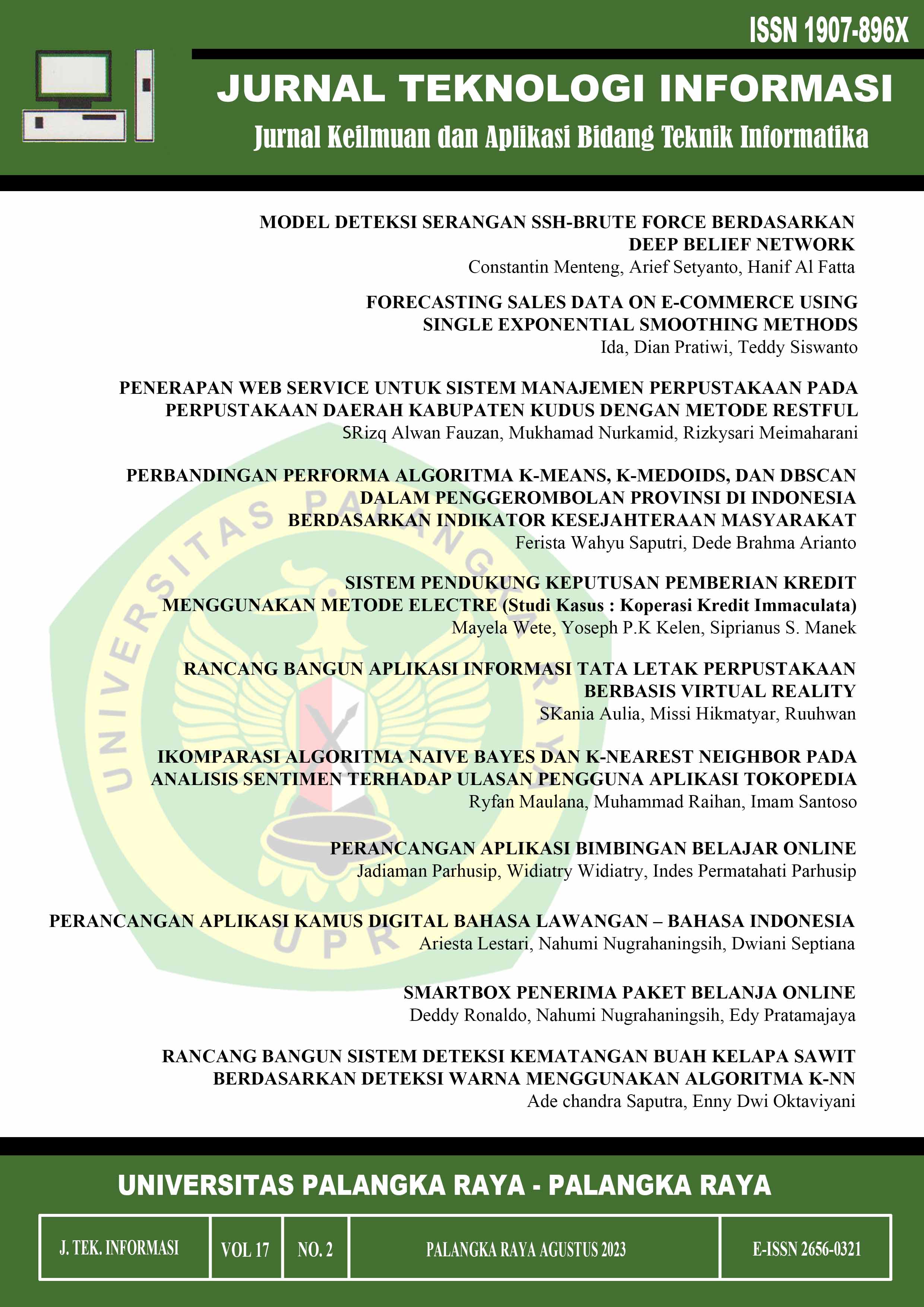SMARTBOX PENERIMA PAKET BELANJA ONLINE
DOI:
https://doi.org/10.47111/jti.v7i2.8782Keywords:
IoT, Camera Tracking & Face DetectionAbstract
At the time of the development of industry 4.0, freight forwarding services urgently needed increased online buying and selling services supported by e-commerce. Problems with delivery services are usually caused by the sender himself. For example, such as damage and loss of goods sent, high shipping costs and erratic delivery times. To overcome the above problems, the researcher created a design in the form of a package receiving box using a linear sequential method such as analysis, design, coding and testing where this box can later be used when the box owner is not at the box's house. The box that is made has a camera that is used to monitor the whereabouts of the person in front of the box, if someone is in front of the box, the box will send a notification to the telegram so that later the owner can control the box to open so that packages can be put into the box. The final result of this research is a package receiving box that can be controlled and provides notification via telegram, where this tool uses a camera as a person detector and ultrasonic to detect items in the box, which will later provide notifications to the telegram bot so that the package owner knows if there is a courier or not in front of the package receiving box, and also telegram can control the servo to unlock the package receiving box itself.
Downloads
References
D. A. Harahap and D. Amanah, “Perilaku Belanja Online Di Indonesia: Studi Kasus,” JRMSI - J. Ris. Manaj. Sains Indones., vol. 9, no. 2, pp. 193–213, 2018, doi: 10.21009/jrmsi.009.2.02.
S. Soo, “Object detection using Haar-cascade Classifier Object detection using Haar-cascade Classifier,” p. 12, 2014, [Online]. Available: https://www.semanticscholar.org/paper/Object-detection-using-Haar-cascade-Classifier-Soo/0f1e866c3acb8a10f96b432e86f8a61be5eb6799.
S. Al-Aidid and D. Pamungkas, “Sistem Pengenalan Wajah dengan Algoritma Haar Cascade dan Local Binary Pattern Histogram,” J. Rekayasa Elektr., vol. 14, no. 1, pp. 62–67, 2018, doi: 10.17529/jre.v14i1.9799.
R. H. Hardyanto, “Konsep Internet Of Things Pada Pembelajaran Berbasis Web,” J. Din. Inform., vol. 6, no. 1, pp. 87–97, 2017.
P. Adam, D. Ronaldo, and N. Nugrahaningsih, “Rancang Bangun Kangkanung Elektrik Dengan Sensor Piezo Berbasis Mikrokontroler,” J. Tek. J. Teor. dan Terap. Bid. Keteknikan, vol. 6, no. 1, pp. 74–83, 2022, [Online]. Available: https://garuda.kemdikbud.go.id/documents/detail/3117138.
A. D. Limantara, Y. C. S. P. Purnomo, and S. W. Mudjanarko, “Pemodelan Sistem Pelacakan Lot Parkir Kosong Berbasis Sensor Ultrasonic Dan Internet of Things (Iot) Pada Lahan Parkir Diluar Jalan,” in Seminar Nasional Sains dan Teknologi, 2017, pp. 1–10, [Online]. Available: jurnal.umj.ac.id/index.php/semnastek.
R. Rinaldy, R. F. Christianti, and D. Supriyadi, “Pengendalian Motor Servo Yang Terintegrasi Dengan Webcam Berbasis Internet Dan Arduino,” J. INFOTEL - Inform. Telekomun. Elektron., vol. 5, no. 2, p. 17, 2013, doi: 10.20895/infotel.v5i2.4.
D. E. Kurniawan and S. Fani, “Perancangan Sistem Kamera Pengawas Berbasis Perangkat Bergerak Menggunakan Raspberry Pi,” J. Ilm. Teknol. Infomasi Terap., vol. 3, no. 2, pp. 140–146, 2017, doi: 10.33197/jitter.vol3.iss2.2017.130.
S. M. Rosa. A.S., Rekayasa Perangkat Lunak, 2nd ed. Bandung: Informatika, 2014.
D. A. Fauziah, E. Supraptono, and R. Kartono, “Pengembangan Ensiklopedi Digital Tari Daerah Jawa Tengah Berbasis Android Dengan Metode Linear Sequential Model,” J. IPTEKKOM J. Ilmu Pengetah. Teknol. Inf., vol. 20, no. 1, pp. 77–91, 2018, doi: 10.33164/iptekkom.20.1.2018.77-91.
M. Bolung and H. R. K. Tampangela, “Analisa Penggunaan Metodologi Pengembangan Perangkat Lunak,” J. ELTIKOM, vol. 1, no. 1, pp. 1–10, 2017, doi: 10.31961/eltikom.v1i1.1.












